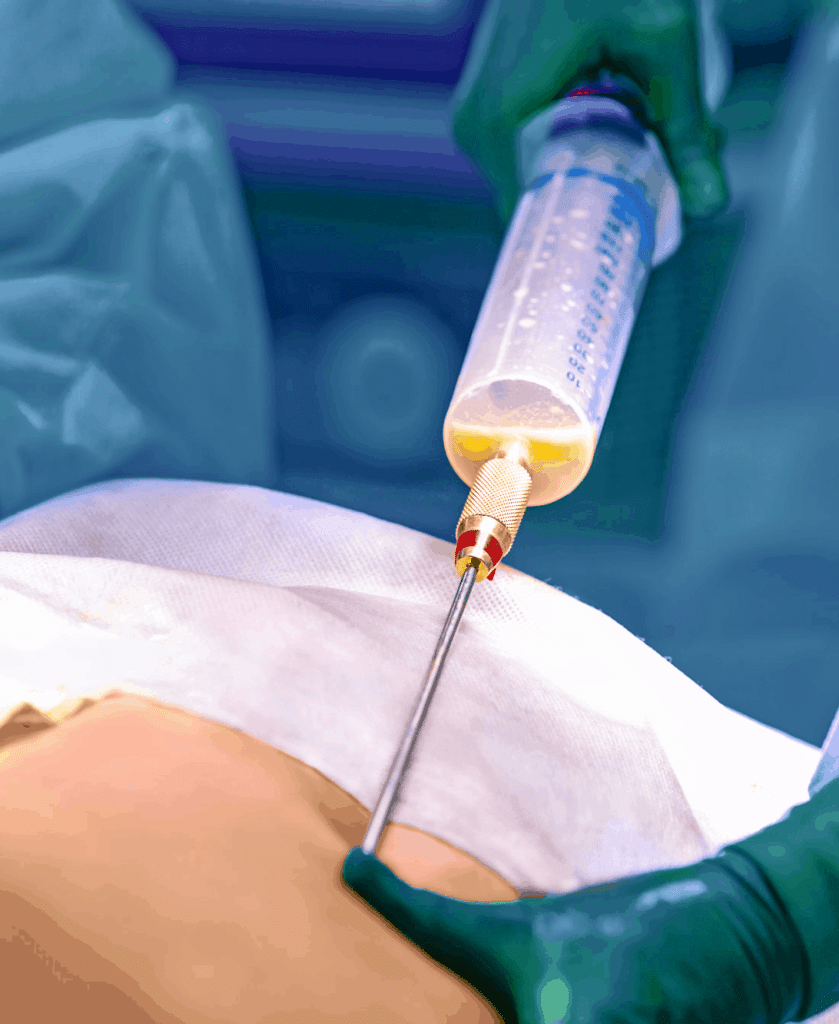Fraxel and collagen production go hand in hand when it comes to skin rejuvenation. While many treatments promise youthful skin and address stretch marks, Fraxel stands out by stimulating collagen growth effectively. This laser technology targets damaged skin without harming the surrounding areas. Unlike other procedures that may leave you with downtime, Fraxel offers a more efficient recovery process.
With its ability to improve texture and tone, it’s no wonder people are turning to this innovative treatment. Say goodbye to dull skin with laser treatment and hello to a vibrant complexion. Understanding how Fraxel enhances collagen production can help you make informed choices for your skincare routine. Get ready to discover the benefits of this unique approach to achieving radiant skin.
Key Takeaways
- Fraxel laser therapy effectively stimulates collagen production, which is crucial for skin health and elasticity.
- Regular treatments can lead to significant improvements in skin texture and tone, particularly for those dealing with photoaging.
- Patients can expect minimal side effects, making Fraxel a safer option compared to more invasive procedures.
- Incorporating Fraxel into your skincare routine can enhance the skin’s natural healing process, leading to a more youthful appearance.
- Long-lasting results from Fraxel treatments mean fewer visits in the long run, saving time and money.
- Research supports the efficacy of Fraxel, highlighting its benefits for various skin concerns, making it a valuable option for individuals seeking skin rejuvenation.
Understanding Fraxel Laser Therapy
Mechanism of Action
Fraxel laser therapy works by creating controlled micro-injuries in the skin. This process stimulates the body’s natural healing response. The laser targets specific areas, leaving surrounding tissue untouched. It penetrates deep into the skin, promoting collagen production. Collagen is essential for maintaining skin elasticity and firmness. As a result, the skin appears smoother and more youthful over time.
Precision and Targeting
Fraxel differs from traditional laser treatments in its precision. Traditional methods often treat large areas of skin at once. This can lead to longer recovery times and more side effects. Instead, Fraxel uses a fractional approach. It delivers energy in tiny columns, which minimizes damage to surrounding tissue. This targeted method allows for faster healing and less discomfort. Patients typically experience fewer side effects compared to older treatments.
Skin Issues Addressed
Fraxel is effective for various skin issues. It addresses sun damage, which can cause dark spots and uneven skin tone. Many people also use it to reduce wrinkles and fine lines. Stretch marks are another concern that Fraxel can help improve. The therapy promotes collagen remodeling, which enhances skin texture overall.
Benefits of Fraxel Therapy
- Minimal Downtime: Most patients return to daily activities quickly.
- Customizable Treatment: Providers can adjust settings based on individual needs.
- Long-lasting Results: Many enjoy results that last for years with proper care.
Patients seeking smoother, healthier skin often turn to Fraxel laser therapy. Its ability to stimulate collagen production sets it apart from other treatments.
How Fraxel Stimulates Collagen
Micro-Injuries
Fraxel laser therapy creates micro-injuries in the skin. These tiny wounds stimulate the body’s natural healing process. The skin reacts by sending signals to produce new cells. This response leads to an increase in collagen production.
Collagen is a vital protein in the skin. It provides structure and strength. As we age, collagen levels decrease. This reduction causes wrinkles and sagging skin. The micro-injuries from Fraxel jumpstart collagen production, improving skin’s overall appearance.
Role of Collagen
The role of collagen in skin rejuvenation is crucial. It helps maintain skin texture and elasticity. Higher collagen levels result in firmer, smoother skin. Improved texture reduces the visibility of fine lines and wrinkles.
Healthy collagen also supports hydration. Well-hydrated skin looks plumper and more youthful. When collagen production increases, the skin becomes more resilient. This enhances its ability to bounce back from damage.
Dual Action
Fraxel does not only stimulate collagen; it also boosts elastin production. Elastin is another essential protein that contributes to skin elasticity. While collagen provides structure, elastin allows the skin to stretch and return to its original shape.
This dual action enhances comprehensive skin improvement. Increased collagen gives firmness, while elastin offers flexibility. Together, they create a balanced and youthful appearance.
Both proteins work synergistically to improve skin health. As a result, patients experience smoother, tighter, and more radiant skin after treatment.
Healing Process
The healing process after Fraxel treatment varies for each person. Generally, patients notice immediate improvements within days. However, full results can take several weeks as collagen continues to build up.
During this time, the body repairs itself naturally. Skin may appear red or swollen initially but improves gradually. Following aftercare instructions helps enhance results and minimize discomfort.
Patients should avoid sun exposure during recovery. Sunscreen is essential to protect healing skin from UV rays. Proper care allows for optimal results from the treatment.
Benefits of Increased Collagen Production
Aesthetic Improvements
Enhanced collagen production leads to significant aesthetic benefits. New collagen formation helps reduce wrinkles and fine lines. This results in smoother skin texture. Improved skin firmness is another advantage. As dermal collagen increases, the skin appears plumper and more youthful.
Fraxel laser treatments effectively stimulate collagen. Patients often notice changes within weeks. Over time, these changes become more pronounced. Many report a visible reduction in signs of aging. Skin looks revitalized and refreshed after treatment.
Long-Term Effects
The long-term effects of increased collagen are notable. Regular stimulation can lead to lasting improvements in skin health. Collagen provides structural support to the skin. It helps maintain elasticity and resilience.
As people age, natural collagen production declines. This decline contributes to sagging skin and wrinkles. Laser treatments can counteract this process. By promoting collagen production, individuals may enjoy healthier skin for years.
Studies show that continued collagen stimulation enhances the overall appearance of the skin. It reduces the visibility of scars and blemishes as well. Patients often feel more confident as their skin improves over time.
Resilience Against Aging
Increased collagen also boosts skin resilience. Stronger skin can better withstand environmental stressors. Factors like sun exposure and pollution take a toll on the skin’s appearance. Higher levels of collagen help combat these effects.
With improved resilience, the skin shows fewer visible signs of aging. Fine lines and sagging become less prominent. Increased collagen aids in healing injuries faster. The body can repair itself more efficiently with adequate collagen levels.
Many individuals seek laser treatments for these reasons. They want to improve their skin’s appearance while enhancing its strength. The benefits extend beyond aesthetics; they promote overall skin health.
Treating Photoaging with Fraxel
Targeting Damage
Fraxel uses fractional laser treatment to target sun-damaged skin. This method penetrates the skin’s surface, creating tiny wounds. These wounds stimulate the body’s natural healing process. As a result, new skin cells form, improving overall skin quality.
Traditional laser treatments often treat the entire skin surface. In contrast, Fraxel focuses on specific areas. It minimizes downtime and reduces the risk of complications. Patients experience less redness and swelling compared to traditional laser skin resurfacing.
Improving Texture
Skin rejuvenation treatments like Fraxel lead to noticeable improvements in skin tone and texture. After treatment, many individuals report smoother skin. Fine lines and wrinkles become less visible as collagen production increases.
The process also helps tighten the skin. This tightening effect gives a lifted appearance, restoring youthfulness. People see improvements within a few weeks post-treatment. Full results typically develop over several months as collagen continues to rebuild.
Addressing Pigmentation
Fraxel effectively addresses pigmentation issues such as hyperpigmentation. The laser breaks down melanin deposits in the skin. This helps even out skin tone and reduces dark spots.
Patients often notice a brighter, more uniform complexion after undergoing this treatment. The ability to restore youthful skin makes Fraxel a popular choice in cosmetic dermatology procedures.
Long-Lasting Results
Results from Fraxel can last for years with proper care. Maintaining healthy skin is crucial after treatment. Using physical sunscreen daily protects against further sun damage and preserves results.
Topical treatments can enhance the effects of Fraxel as well. Products containing retinoids or antioxidants support ongoing skin health. Regular follow-up sessions may be recommended for optimal maintenance.
Choosing Professionals
Selecting experienced professionals at cosmetic laser centers is essential for effective treatment. Qualified practitioners understand individual needs and customize treatments accordingly. They provide guidance on pre- and post-treatment care to maximize outcomes.
Before starting any procedure, patients should discuss their concerns openly. Understanding expectations can lead to better satisfaction with results.
Minimal Side Effects of Fraxel
Safety Profile
Fraxel has a strong safety profile. It typically causes minimal side effects when performed by qualified professionals. Common side effects include mild redness and swelling, similar to a sunburn. These effects usually fade within a few days.
The procedure uses fractional laser technology. This means it targets only a fraction of the skin at a time. This method reduces damage to surrounding areas, promoting quicker healing.
Comparison with Other Treatments
Compared to other skin treatments, Fraxel is gentler. For example, traditional laser treatments can cause more severe side effects like blistering or prolonged redness. Chemical peels may lead to peeling and irritation that lasts longer than Fraxel’s recovery time.
Patients often report less discomfort with Fraxel than with other procedures. Many find it easier to tolerate. The gentle nature of the treatment makes it suitable for various skin types.
Quick Recovery Time
Recovery from Fraxel is generally quick. Most people return to their daily activities within a few days. The downtime is shorter compared to more invasive procedures like surgical facelifts.
Low risk of complications also sets Fraxel apart. Serious side effects are rare when the procedure is done correctly. Patients should follow post-treatment care instructions for the best results.
The quick recovery allows individuals to resume work and social events sooner. This aspect appeals to many who seek skin improvement without significant interruption in their lives.
Enhancing Skin Healing with Fraxel
Controlled Stimulation
Fraxel treatments use laser skin resurfacing technology. This method delivers controlled energy to the skin. It creates microscopic wounds in the targeted areas. These wounds stimulate the body’s natural healing processes. As a result, the skin begins to repair itself. This process improves texture and tone.
The laser targets specific layers of skin. It does not damage surrounding tissues. This precision helps minimize downtime and side effects. Patients often notice improved skin rejuvenation after just one session. The controlled stimulation encourages collagen production, leading to firmer skin over time.
Accelerating Skin Cell Turnover
Fraxel plays a crucial role in accelerating skin cell turnover. New skin cells replace old ones faster after treatment. This rapid turnover enhances the skin’s overall appearance. It helps reduce signs of aging, such as fine lines and wrinkles.
Fraxel addresses issues caused by sun exposure. Sun damage is a common concern for many individuals. The treatment helps fade dark spots and uneven pigmentation. Regular sessions can lead to radiant skin that looks youthful and vibrant.
Synergy with Natural Healing
Fraxel works in harmony with the body’s innate ability to heal and regenerate. The treatment boosts the skin’s natural response to injury. As the body repairs itself, it produces more collagen and elastin. These proteins are essential for maintaining skin elasticity and firmness.
Patients often combine Fraxel treatments with other skin care lasers or topical creams for enhanced results. Using sunscreen is vital after treatment to protect newly formed skin cells from further damage. Harsh skincare products should also be avoided during the healing phase.
The synergy between Fraxel and the body’s healing mechanisms leads to long-lasting results. Many patients report significant improvements in their skin months after completing their treatment sessions.

Long-lasting Results of Fraxel Treatment
Durability of Results
Fraxel treatment provides long-lasting results for many patients. Improvements can last from several months to years. The procedure stimulates collagen production, which helps repair skin damage. Patients often notice a significant reduction in the appearance of scars, wrinkles, and fine lines.
Studies show that the effects of Fraxel can persist long after the initial treatment. For example, some patients report visible improvements even two years post-treatment. This durability makes it an attractive option for those with extensive sun damage or other skin concerns.
Maintenance Through Treatments
Periodic treatments help maintain the results achieved with Fraxel. Most dermatologists recommend follow-up sessions every six to twelve months. These sessions ensure that collagen levels stay elevated and skin remains youthful.
Proper skincare also plays a vital role in maintaining results. Using sunscreen daily protects the skin from further sun damage. Moisturizers keep the skin hydrated and promote healing. Following a dermatologist’s advice on skincare products enhances the longevity of the treatment.
Patient Satisfaction
Many patients express high satisfaction with their Fraxel outcomes. They appreciate the natural look of their rejuvenated skin. Unlike more invasive procedures, Fraxel offers gradual improvements that do not appear overly dramatic.
Feedback from patients shows they feel more confident after treatment. They notice fewer signs of aging and improved skin texture. This boost in self-esteem is often a key reason people choose Fraxel.
The effectiveness of Fraxel has led to its popularity among candidates with various skin issues. Individuals dealing with scars from acne or injuries find it especially beneficial. The treatment addresses these concerns while promoting overall skin health.
In summary, Fraxel treatment yields durable results through effective collagen production and patient commitment to maintenance. Regular follow-ups and a solid skincare routine are essential for preserving improvements over time.
Research on Fraxel Efficacy
Key Studies
Numerous studies show that Fraxel treatments effectively stimulate collagen production. A study published in the Journal of Cosmetic Dermatology in 2016 examined patients who received Fraxel laser therapy. Results indicated a significant increase in collagen levels within three months after treatment. Participants noted improvements in skin texture and firmness.
Another study from 2019 focused on the long-term effects of Fraxel. Researchers found that patients maintained enhanced collagen levels for up to two years post-treatment. This suggests that Fraxel not only provides immediate results but also promotes ongoing skin rejuvenation over time.
Clinical Trials
Clinical trials further validate the safety and efficacy of Fraxel. A trial conducted by the American Society for Dermatologic Surgery in 2020 assessed various skin conditions treated with Fraxel lasers. The findings highlighted its effectiveness in treating sun damage, acne scars, and fine lines.
Patients reported high satisfaction rates after undergoing treatment. The majority experienced minimal side effects, such as temporary redness or swelling. These outcomes support the idea that Fraxel is a reliable option for those seeking skin improvement without extensive downtime.
Ongoing Research
Research continues to explore new applications for Fraxel technology. Scientists are investigating how different wavelengths can enhance treatment outcomes. For instance, a recent study looked into combining Fraxel with other procedures like fillers and Botox. Early results show promising synergy between these treatments.
Another area of research focuses on using Fraxel for skin types often overlooked in previous studies. This includes darker skin tones, which have unique challenges regarding laser treatments. Ongoing trials aim to ensure safety and effectiveness across diverse populations.
Future Enhancements
Future advancements in Fraxel technology may include improved laser precision and customization options. Researchers are developing new devices that allow practitioners to tailor treatments based on individual patient needs. This could lead to even better results and increased patient satisfaction.
As more studies emerge, the understanding of Fraxel’s benefits will deepen. The focus remains on enhancing collagen production while ensuring patient safety.
Closing Thoughts
Fraxel laser therapy is a game changer for boosting collagen production. This treatment helps your skin rejuvenate, combat photoaging, and achieve long-lasting results with minimal side effects. The science backs it up, showing that Fraxel effectively stimulates collagen for healthier, youthful skin.
If you’re considering enhancing your skin’s appearance, Fraxel could be the answer. Don’t wait to experience the benefits of increased collagen production. Consult with a qualified professional today to see how Fraxel can transform your skin and boost your confidence.
Frequently Asked Questions
What is Fraxel laser therapy?
Fraxel laser therapy is a non-invasive skin treatment that uses fractional lasers to improve skin texture, tone, and elasticity. It stimulates collagen production, helping to rejuvenate the skin and reduce signs of aging.
How does Fraxel stimulate collagen production?
Fraxel works by creating micro-injuries in the skin, prompting the body’s natural healing process. This stimulates collagen and elastin production, leading to firmer, more youthful-looking skin over time.
What are the benefits of increased collagen production?
Increased collagen production can enhance skin elasticity, reduce fine lines and wrinkles, improve skin texture, and promote a more even skin tone. This results in a healthier and more youthful appearance.
Can Fraxel treat photoaging?
Yes, Fraxel is effective for treating photoaging. It targets sun damage, discoloration, and uneven texture, helping to restore a more youthful complexion while promoting collagen growth for long-term improvement.
Are there side effects associated with Fraxel?
While minimal side effects may occur, such as redness or swelling, they typically resolve within a few days. Most patients experience only mild discomfort during treatment, making Fraxel a safe option for skin rejuvenation.
How does Fraxel enhance skin healing?
Fraxel enhances skin healing by triggering the body’s repair mechanisms. The micro-injuries from the laser encourage new skin cell growth and collagen synthesis, accelerating the healing process and improving overall skin health.
How long do the results of Fraxel last?
Results from Fraxel treatments can last for several months to years, depending on individual factors like skin type and maintenance. Regular follow-up treatments can help sustain collagen levels and prolong results for youthful skin.











